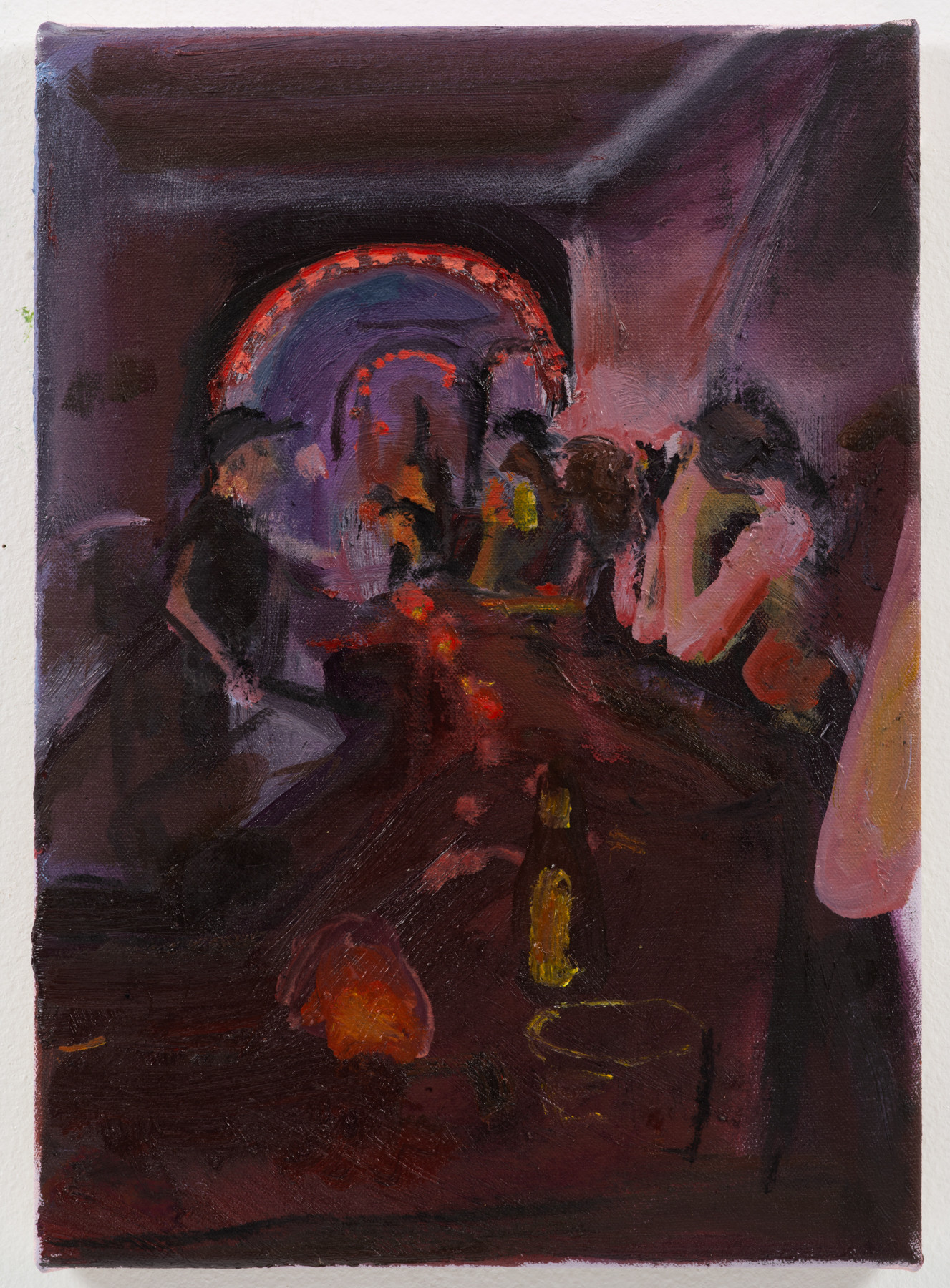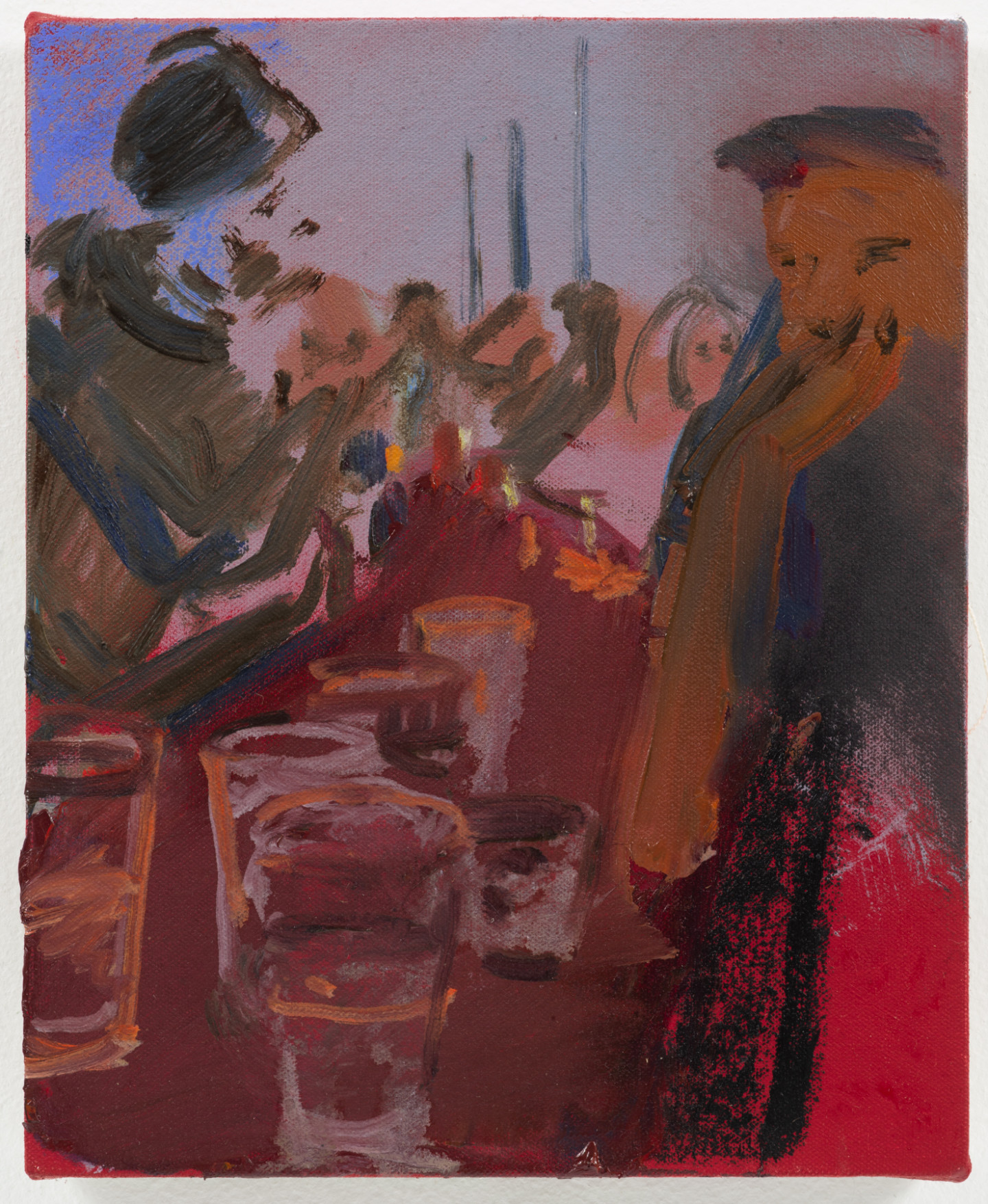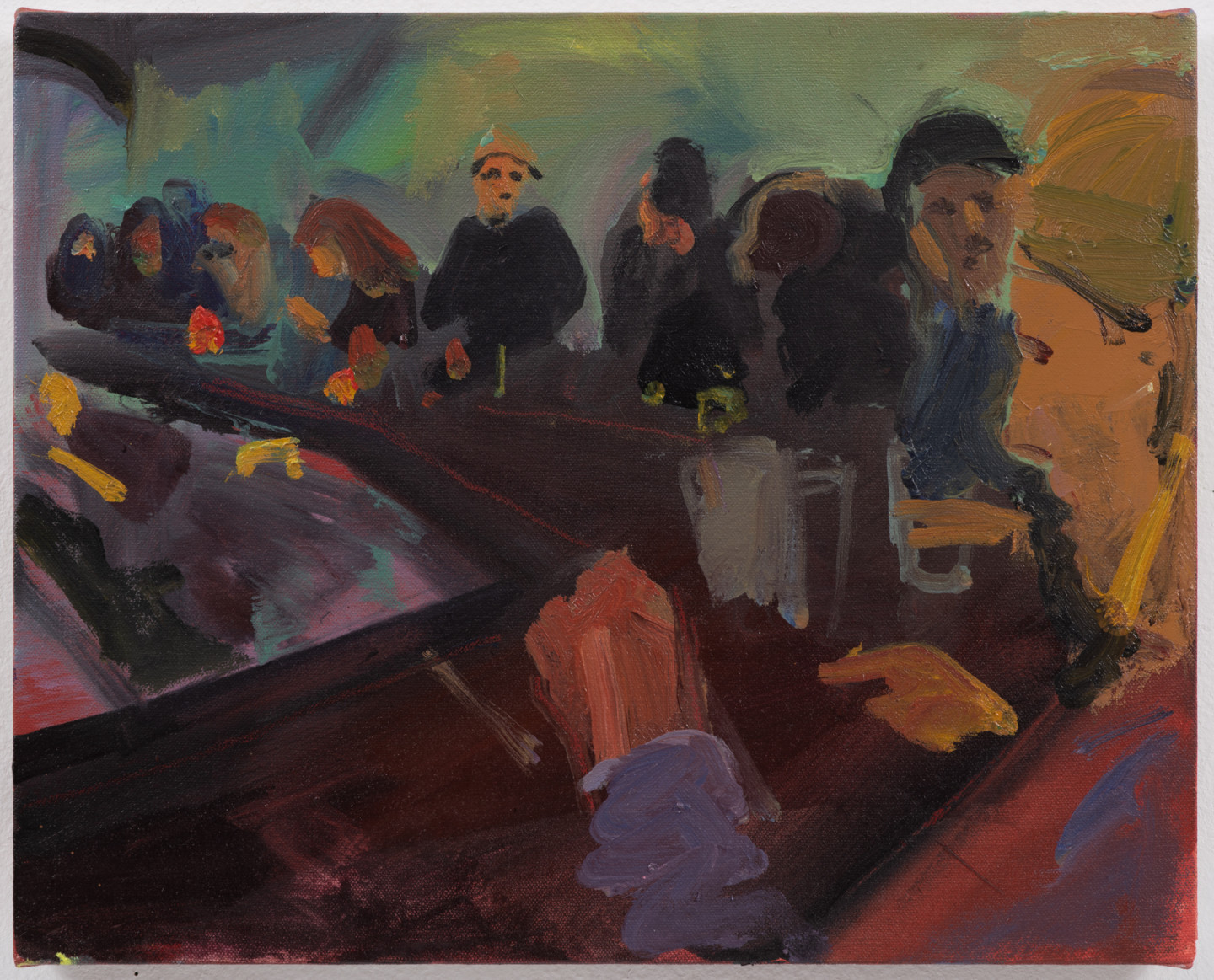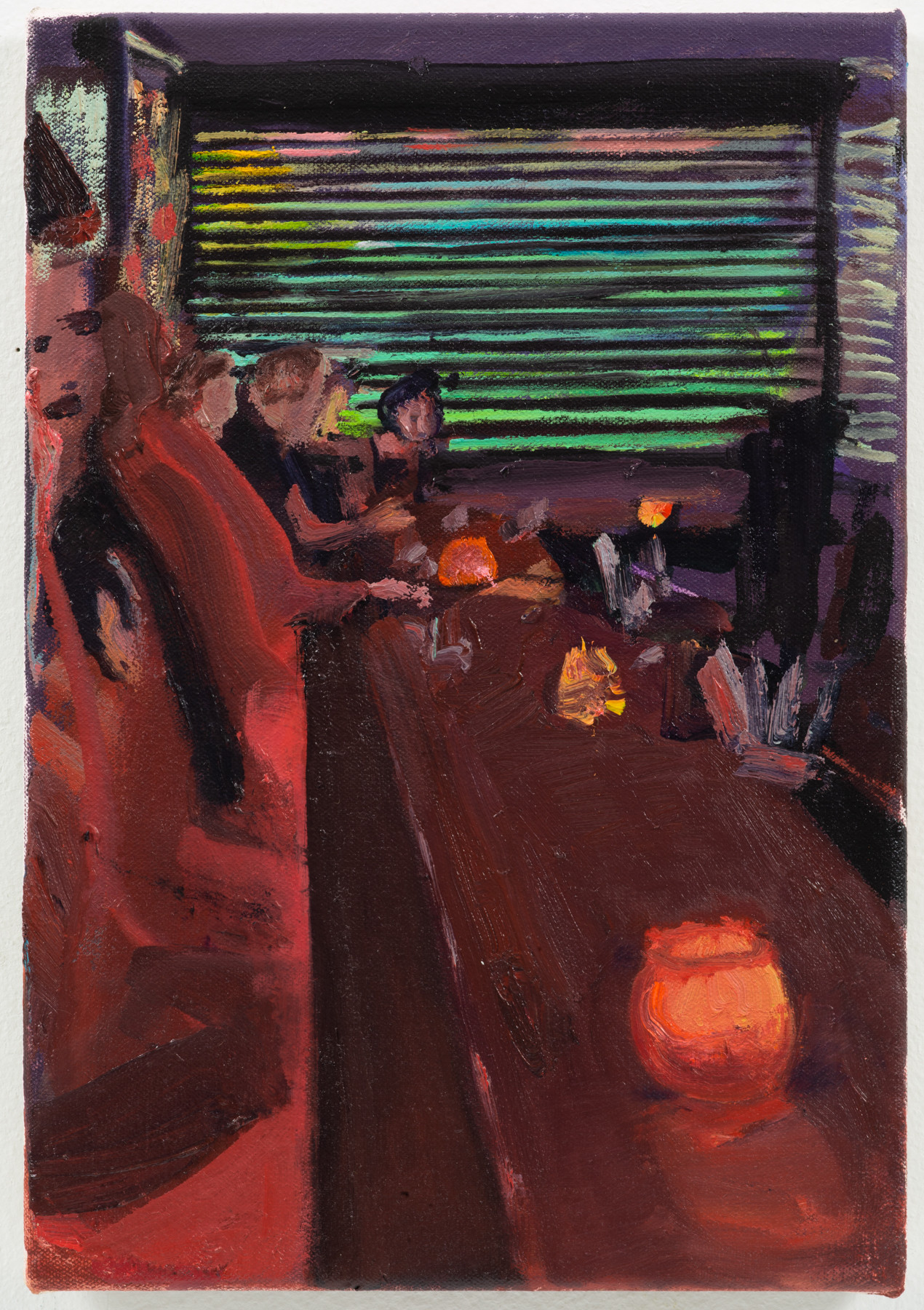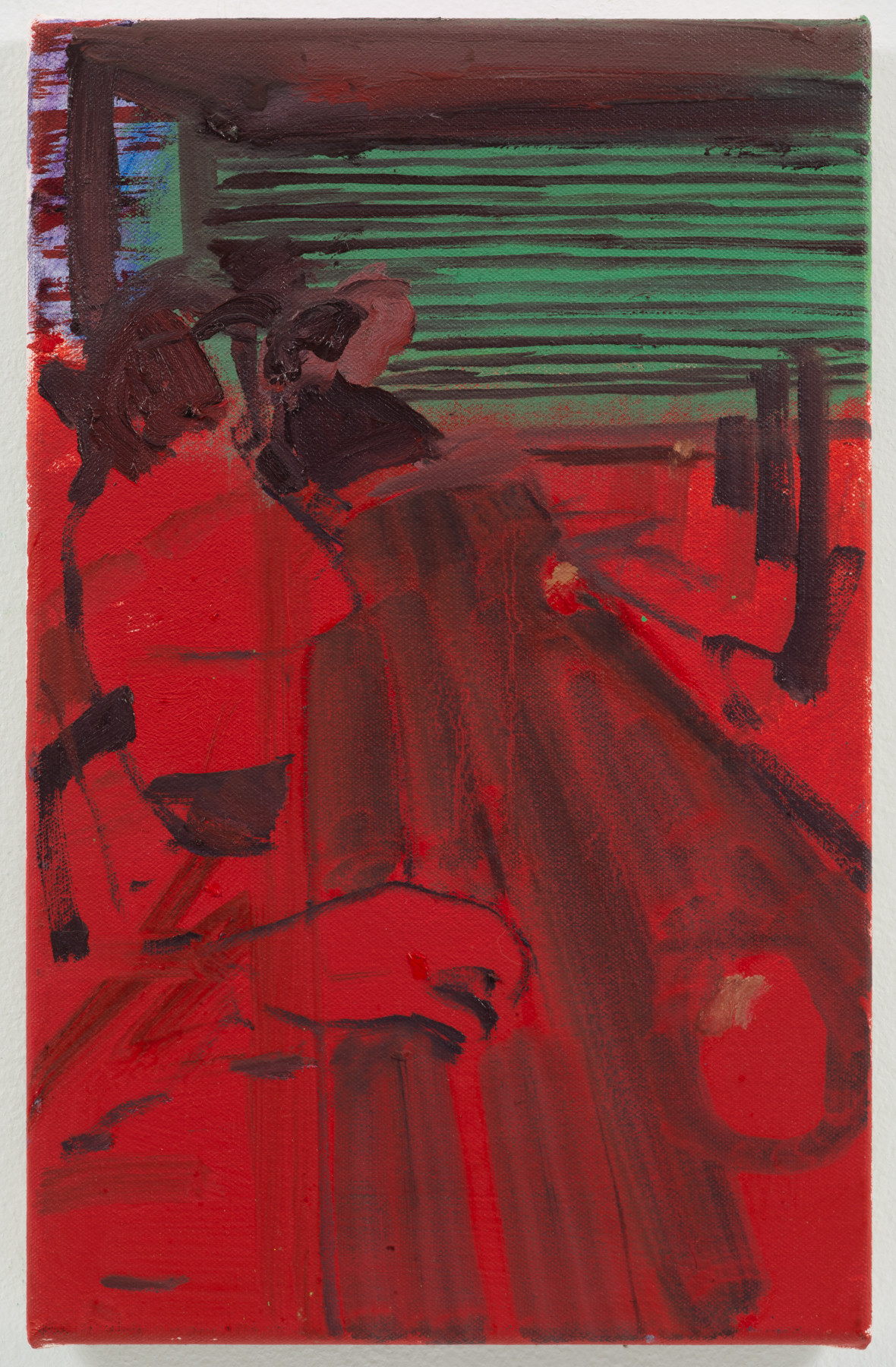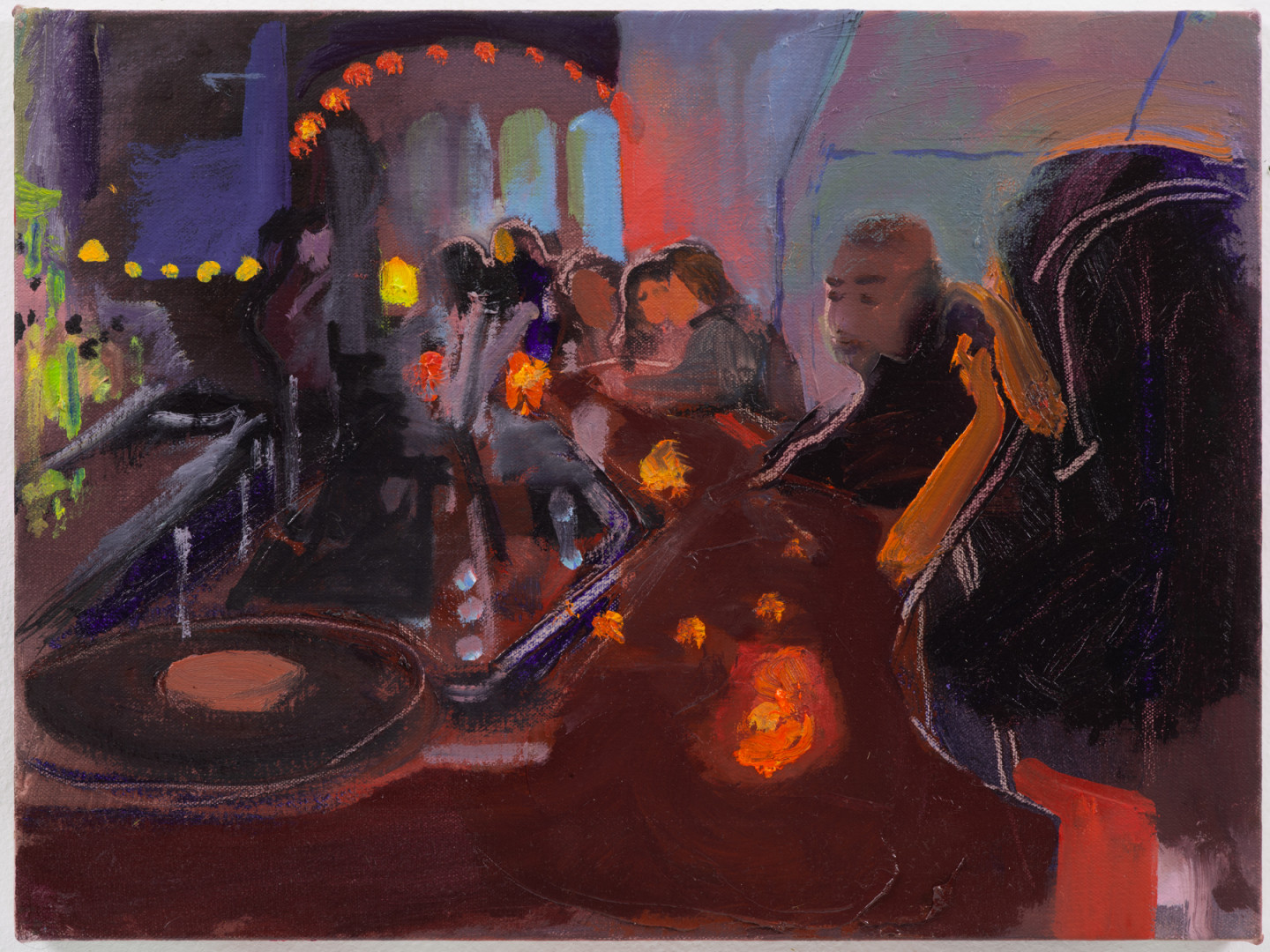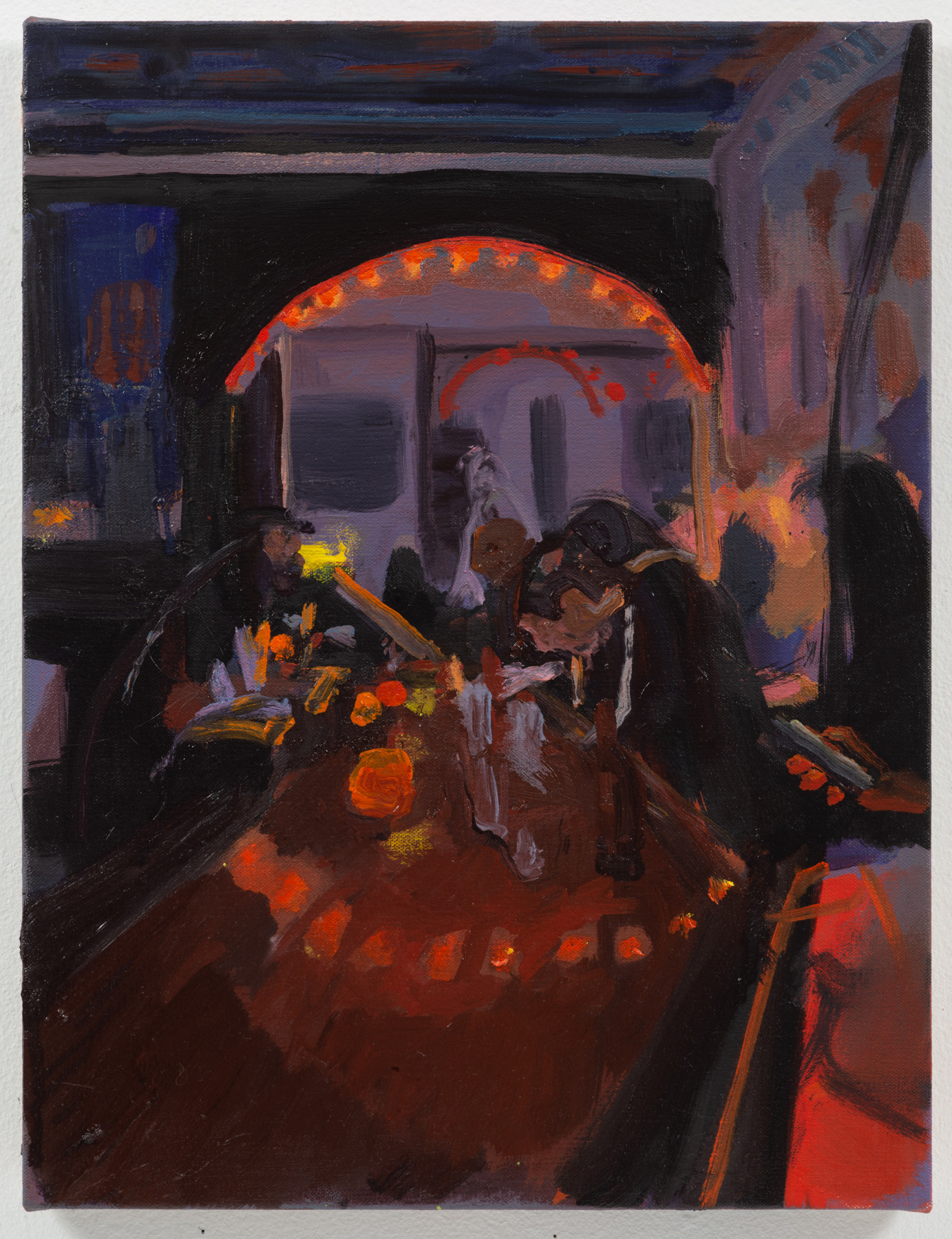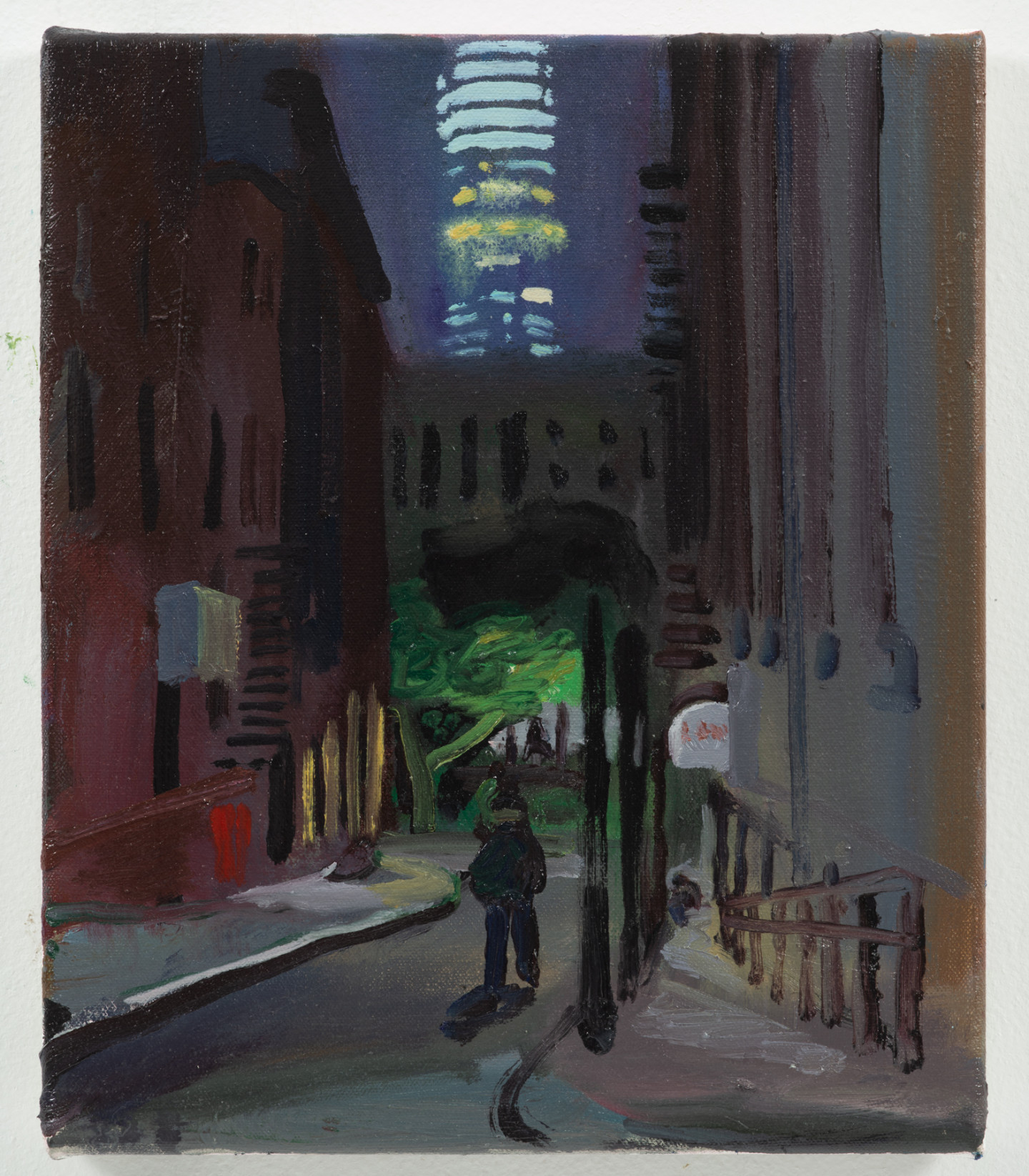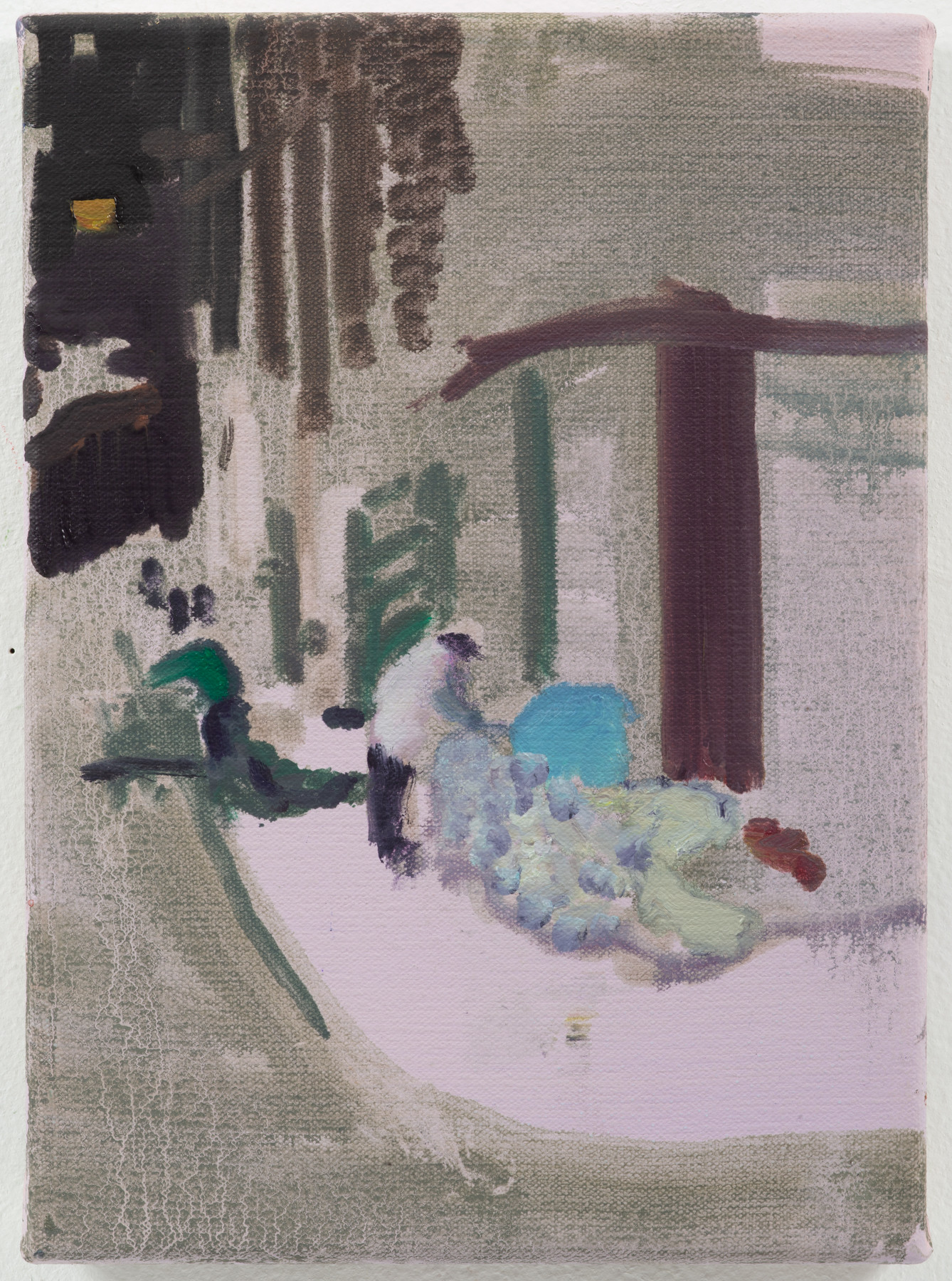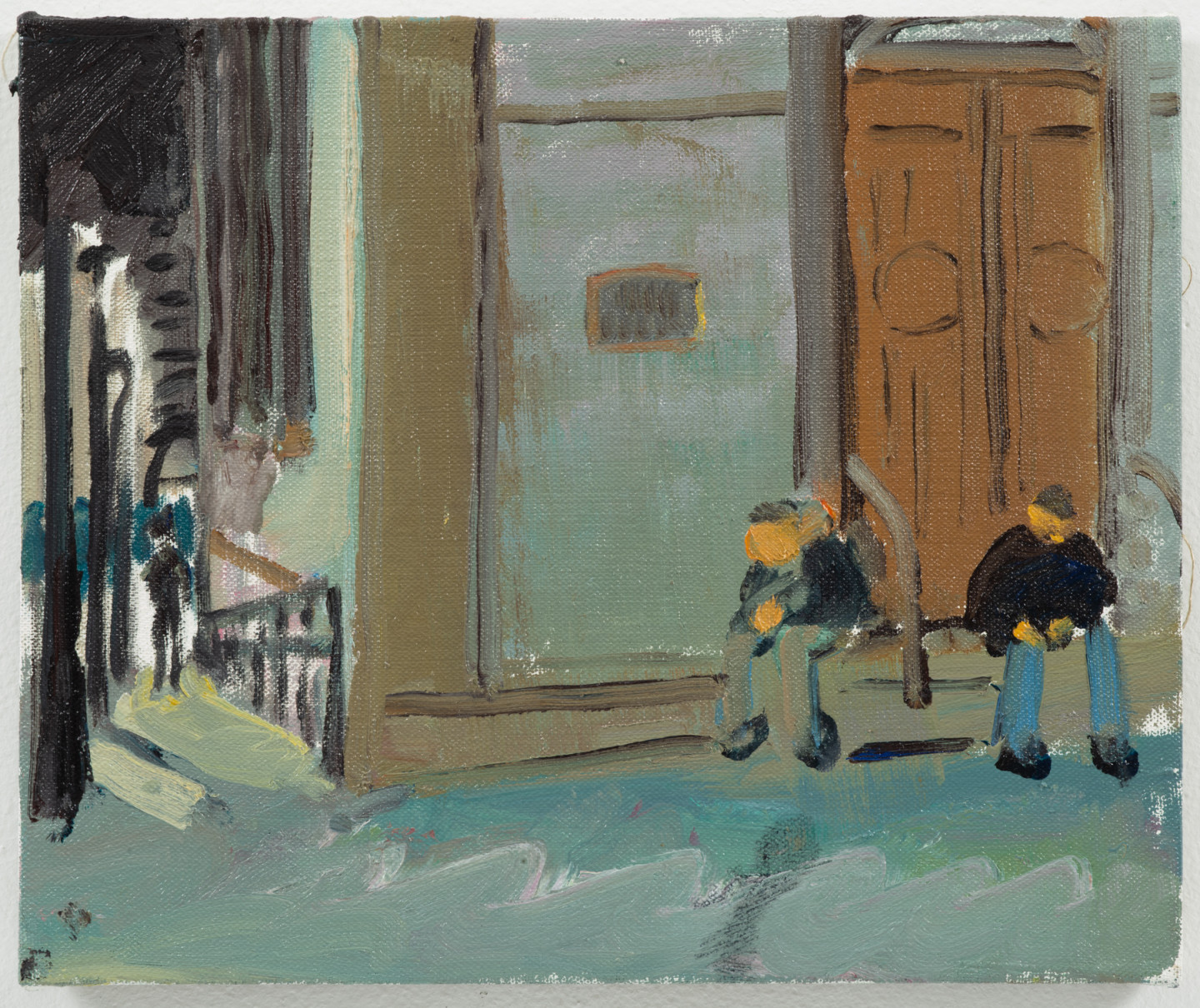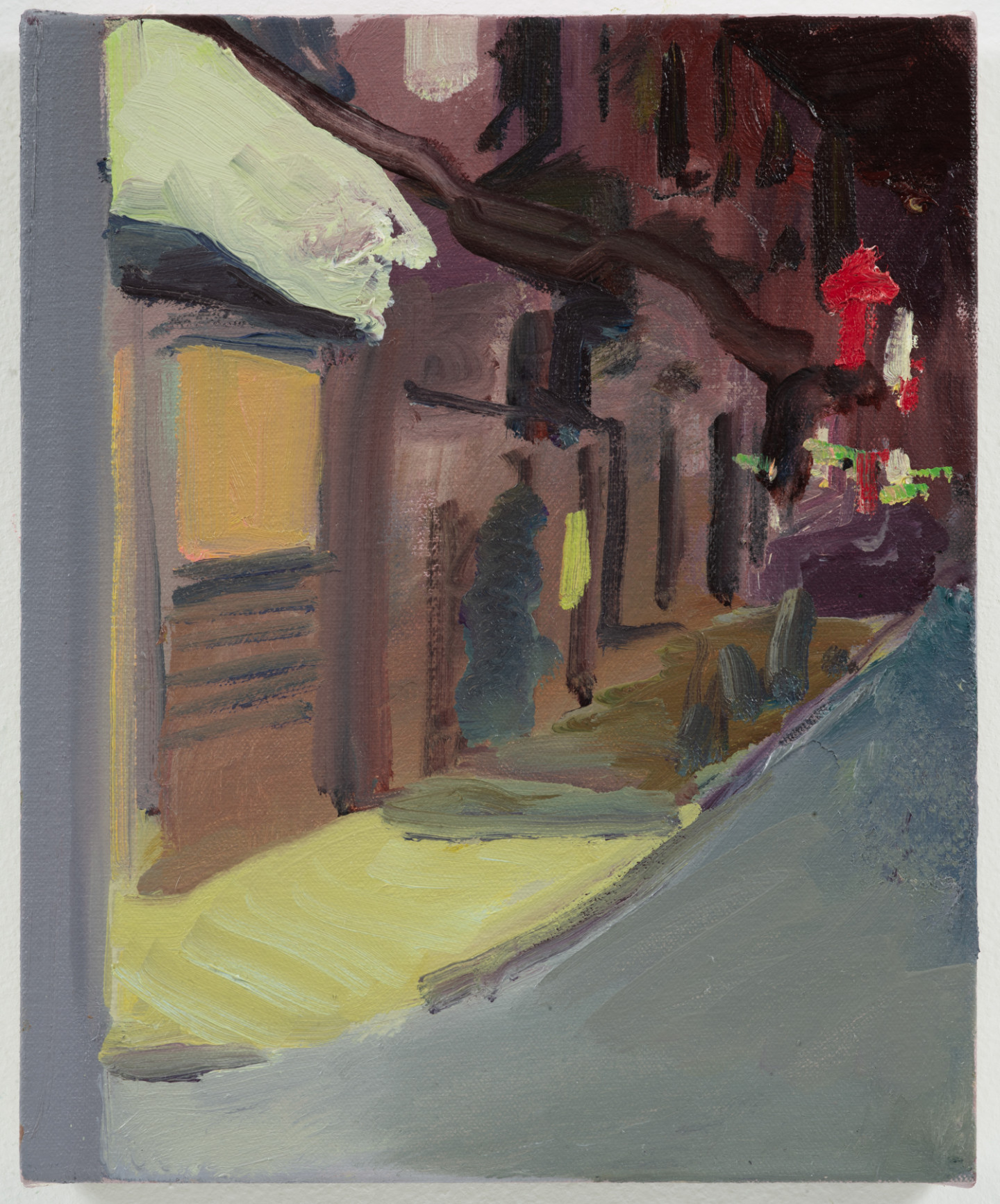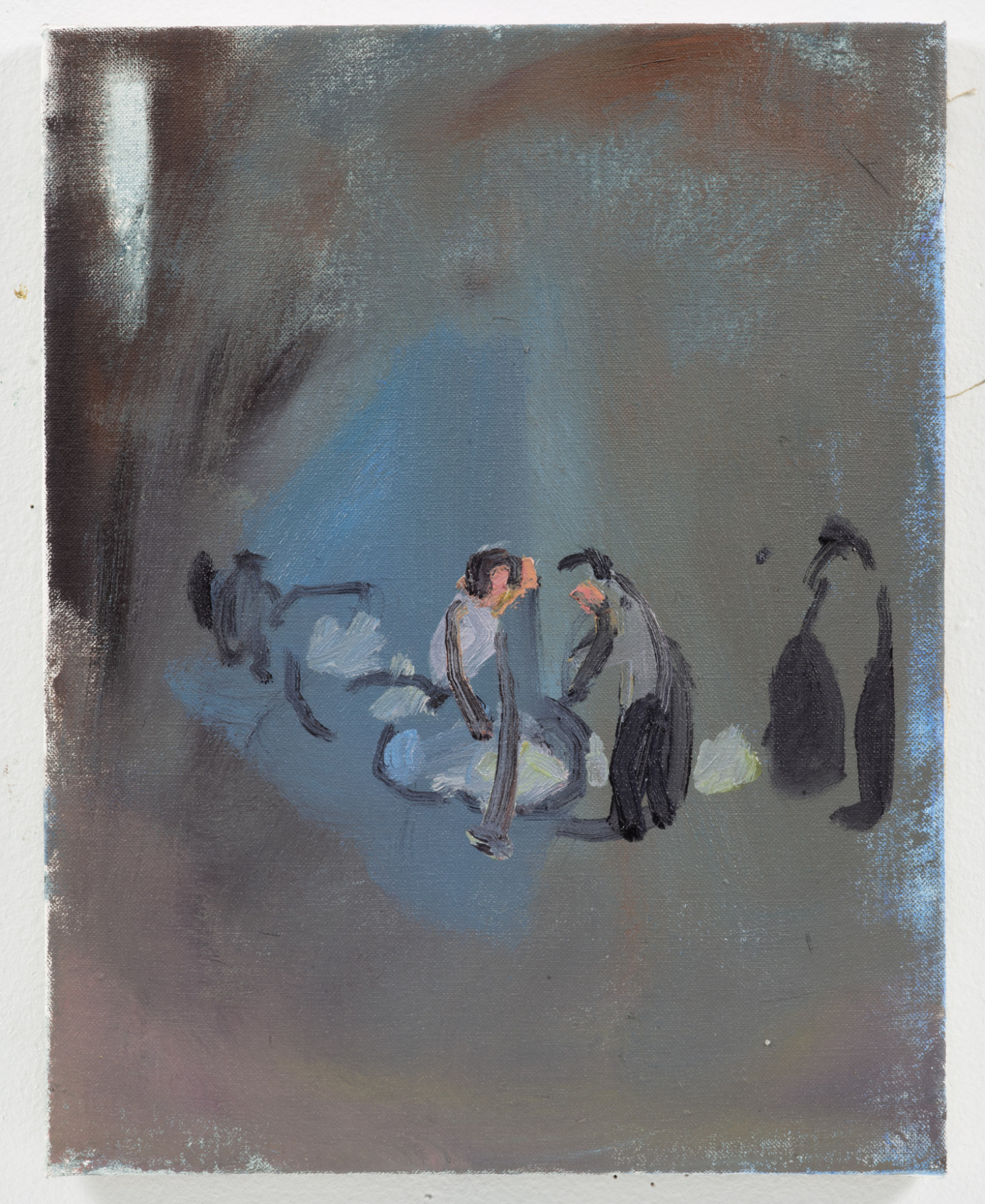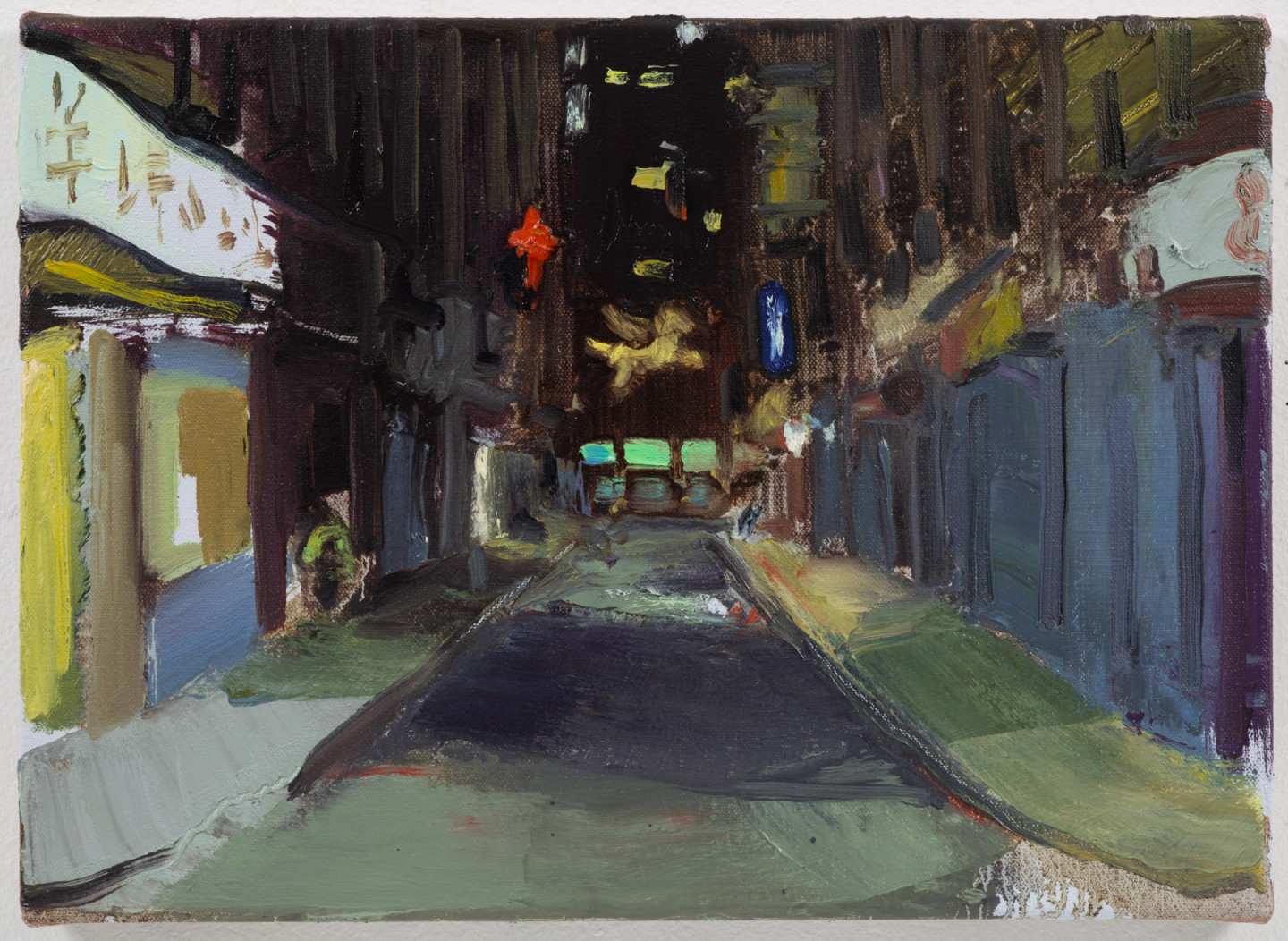Izzy S. Barber’s (b.1990) masterly pictures in oil paint move rhythmically between figuration and abstraction with geometric allusions to familiar New York City architecture and detailed studies of moody nightlife. As a rare plein air painter, the artist continues to return to the same corners in lower Manhattan’s Chinatown to develop her bold atmospheric vernacular. Composing tight surfaces showing oft repeated yet overlooked moments, muted blue-grey walls or the pink-brown hues of bricks set aglow by neon orange streetlamps convey a surprising intimacy (Chinatown (Mott II)). Barber keeps a respectful distance from bottle collectors at their work or resting, but draws us into figures sketched from her easel with sparse delicate brushstrokes. Teaching herself to paint in the dark while seated at the corner of her local bar in Queens, Barber’s Last Call reverberates with the loss of our social gatherings this spring. The interior paintings, of anonymous regulars or bartender friends, show individuals in seemingly private moments of repose becoming focal points in the crowd. With exquisite coloration, Barber’s studies from life slow down a glimpse of make-shift communities or offer perspective from a sadly abandoned half-sipped cocktail (Drink). The confidence of this emerging young painter’s mark making inspires by returning poetry to the canvas. Barber earned her Bachelor's Degree in Studio Arts and Human Rights from Bard College in May 2011 and the Masters in Fine Arts at the New York Studio School in 2017. – Darla Migan.
JamesFuentes.Online will feature an exhibition of two new series of work by Barber on view from June 15 – July 15, 2020, the interview below took place during a social distanced meeting / viewing.
Darla Migan
The quiet that your paintings are able to communicate make me forget how the city is never silent. So even if you're working at night in a part of the city that is nowhere as busy as it is during the day, there are always still people coming and going, cabs honking. But there's a sort of silence that shows you have a certain kind of control over the mood or in creating a specific atmosphere. For example, in Chinatown (Tower) there's a lonely figure that seems to be walking away and I’m really interested in how you decide how to set up the temporality of the painting and how you’re composing the temporality of the figure in relation to how quickly you are making the work?
Izzy Barber
That's a very specific one. I mean, I'd say that they're all different. There’s not a rule or formula. For the Chinatown series, I'll just decide on a place to be and where I'm looking. And it can start slowly by building a structure that I know is important to the composition, something to ground myself. Then I just let things come in and out, and paint things how it feels right at the time. So it’s not like I know I have to have someone walking, there were probably four different people that walked by that night. But there was one guy who is actually walking towards me, wearing a mask, so there’s just a slit of eye and he’s backlit too, like a silhouette. It was so mysterious, him crossing the street, walking towards me. I had to make him part of the story.
Darla Migan
I definitely sense that there was a more substantial presence there in that figure.
Izzy Barber
These two series (Bar and Chinatown) developed side by side before our world shifted. But I always saw this kind of balance between them--the really busy buzzing bar scene and then the quiet in Chinatown. There was this feeling of being alone at night on the street and looking at the city, which is more contemplative.
Darla Migan
So I like that in these two series happening side by side, they do seem to balance each other out perhaps in the most obvious way as paintings of exteriors and interiors. But can you say more about why these two series have come about together?
Izzy Barber
I feel like there are probably a lot of differences and commonalities too. It all started because I really wanted to paint at night. I wanted to get out of my studio and I was interested in nighttime feeling, I was interested in colors at night. And I wanted to be in a place that I know and go to, to paint the world around me.
Darla Migan
What made you want to paint at night?
Izzy Barber
For a long time, I was painting a very intimate world-- friends, family members, people who I knew closely and I would paint them, like, two feet away. It was a very close world. And I got a lot out of that. But at a certain point, I felt like I needed to expand in some way. That was when I left the (New York) Studio School. I got this grant to travel to Europe to look at art, which was like the longest break from painting I had had for a long time. I was seeing all this work and when I came back, my paintings changed and instead of painting people, I started painting interiors, mostly— my studio, empty spaces, doors and windows. It felt like a transition phase because I knew that I had done something with the portraits but I felt the need to figure out what this next thing was.
Darla Migan
You seem to explore the total opposite in the abstraction of figures, especially in the majority of the Chinatown series where there's barely a figure present. It’s as if you go from detailing a psychological portrait to the point of only implying that someone is near. It’s such a huge difference in approach. Did you think consciously about it? Or, did you just decide to leave the studio and see what happened when you left.
Izzy Barber
I had it in my head that I wanted to paint an experience of people that aren't in my close circle and be honest about what that kind of experience of someone, often a stranger on the street, is like. I had in my mind the idea of a crowd—an experience of people beyond the specificity of the portrait and happening upon humanity in a different way. When I started painting at my local bar, I wanted to be true to that very specific way of experiencing people when you’re sitting at a bar. When you go to a bar, sometimes you go alone not even to meet anyone but just to be close to people, to strangers.
Darla Migan
You do a very good job of not creating symbols out of strangers, and are very delicate in your approach to painting them. You have shown me in just being introduced to these two series that you have discovered a lot of tools to think through images of strangers gathering. You gather the crowd without also trying to dictate what the Other represents.
Izzy Barber
I try to be really true to my experience of something. If you’re really dedicated to drawing from life you know that the worst thing that you can do is to impose an idea upon what you’re doing. You try to take the information that you see and translate it. It doesn’t mean you take yourself out of it…it’s more like trying to be true to an experience of it. So when it comes to my approach to painting strangers I think about how it’s part of the city, seeing people is part of everyone’s experience on the street.
Darla Migan
Are the series still going?
Izzy Barber
The bar paintings had a really abrupt end. The last one I finished, “Last Call,” was a week or two before the bars shut, all of a sudden. But with the Chinatown paintings, I kept going back to the same corner (after PAUSE). It was always quiet, but now it was so much emptier. It was all the feelings I had, but deeper and more meditative. There was even more of a sense that there are people in the building and a city you’re not seeing.
I don’t know what’s going to happen now. There’s a curfew, and the Manhattan bridge that goes right to Chinatown is a very important site for protestors. I’m dedicated to painting something out there, but I’ll just adapt as the city changes.
Darla Migan
Thank you for sharing space with me Izzy, Thank you for your work.
Darla Migan is a writer and cultural critic living in upstate New York.
